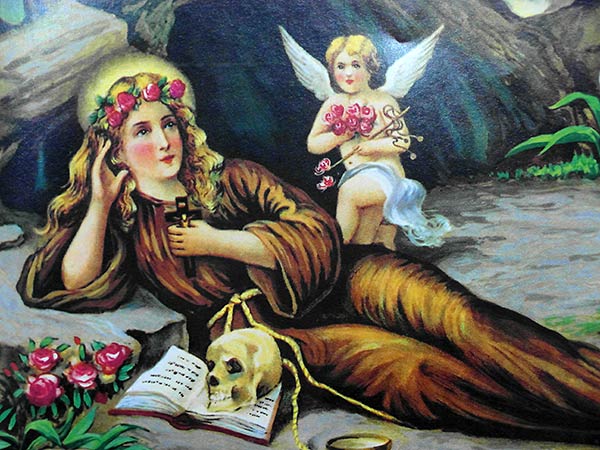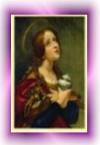She is especially important internationally as a saint invoked in times of plague.
St Rosalia often is depicted as a young woman, sometimes holding a cross, book or skull, and also a spray of lilies. Some images show her holding a chisel and hammer with which she carved her dedication (see below). She is often pictured wearing a crown of roses, attended by winged angels, and often with a view through a cave opening of Palermo Harbour.
Rosalia was born of a Norman noble family that claimed descent from Charlemagne. Devoutly religious, she retired to live as a hermit in a cave on Mount Pellegrino, where she died alone in 1166. Tradition says that she was led to the cave by two angels. On the cave wall she wrote “I, Rosalia, daughter of Sinibald, Lord of Roses, and Quisquina, have taken the resolution to live in this cave for the love of my Lord, Jesus Christ.”
In 1624, a plague beset Palermo. During this hardship, St. Rosalia appeared first to a sick woman, then to a hunter, to whom she indicated where her remains were to be found. She ordered him to bring her bones to Palermo and have them carried in procession through the city.
The hunter climbed the mountain and found her bones in the cave as she had described to him. He did what she had asked in the apparition. After her remains were carried around the city three times, the plague ceased. After this, St. Rosalia was venerated as the patron saint of Palermo, and a sanctuary was built in the cave where her remains were discovered.

